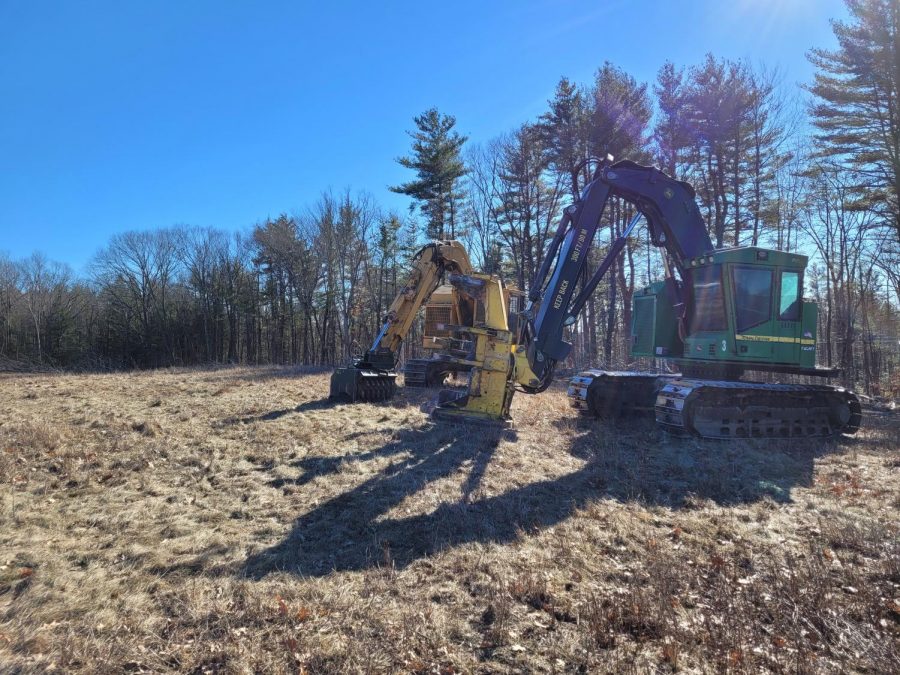A case for deforestation: Why it is good for the environment
The deforestation at Saint Anselm College has sparked campus-wide controversy over the past couple of months.
March 31, 2021
In a world where suburbs are popping up left and right, and where you can seldom find a place untouched by the stain of humanity, it seems ridiculous to argue that deforestation is good for the environment. However, the removal of old growth forests may be one of the most essential steps we can take toward building a stable, diverse, and healthy biosphere. Of course, this does not mean we should break out the chainsaws, and it certainly does not mean we should put up any more suburbs, but it is vital that we take a new look at how our actions, both in the destruction and preservation of natural habitat, have come to jeopardize countless ecosystems and species.
Old growth forest, as its name suggests, is a forest made up of mostly large, slow growing trees. These mature woodlands supply excellent habitat for many species of flora and fauna, from soft leafy ferns to deer, songbirds, and of course, magnificently large trees. Their densely packed branches shade the soil, leaving it damp and well protected from winds and extreme weather.
The leaf cover provides a great deal of nutrients for the soil, and many varieties of mammals, birds, and reptiles flock to the shade of these pine or hardwood stands to forage for the astounding amount of edible plant matter which can be found in the trees or on the ground. However, these old growth forests also bring the death of another, oft forgotten habitat, the successional forest.
Successional forests are made up of woody brush, thickets, and young, fast growing trees such as birches and aspens. These areas also offer exceptional habitat and protective coverage for smaller animals like rabbits and birds. These successional habitats were once home to many of the most jeopardized species in New England, including the whippoorwill, the ruffed grouse, several varieties of songbirds, and the New England cottontail rabbit, among many others. Species such as these rely exclusively on the dense scrub brush and sparse woodland of successional forests.
While similar species such as the eastern cottontail have certain adaptations which make them better suited to survive in suburban areas, their close relatives, the New England cottontails, can not venture in to people’s back yards. This means they, like so many other successional species, are doomed to die as they watch their ever-dwindling successional forests get bulldozed into housing developments or grow up into old growth forests.
Of course, housing is necessary, and old growth forests are an important cog in the global mechanism, but successional forests are just as vital. True, new growth habitats do not look as lush as the green sprawling branches of an old growth forest, but if you take a moment to appreciate them, successional forests can reveal astounding biodiversity. Hidden among the dry brown thorns are often brilliant wildflowers of all colors, spectacular songbirds with bright plumage, and various other species which you would never see dashing between the wide trunks of an oak stand. What we need are sustainable forestry management plans which are not dictated by flashy social media campaigns, but instead backed by science and experience.
Practices such as clear cutting, which are often villainized by environmentalist groups, actually promote far superior levels of biodiversity in comparison to old growth forests alone. Events which would have naturally cleared land and produced successional forests, such as forest fires and severe storms, are better controlled both purposely, through our modern firefighting techniques, and inadvertently, by dividing wild habitats with our crisscrossing roads and suburbs.
Now, naturally occurring successional forests are vastly outnumbered by old growth forests, and it is the fault of humans. Therefore, it rests with humanity to remedy these problems. Instead of protecting just the most iconic habitats, we need to promote all habitats, and do everything in our power to recreate these endangered areas, and yes, this includes controversial methods of forestry management like clear cutting and controlled burns. Without these measures, many of the most beautiful and iconic species of New England, and the world, may be lost forever, and their blood will be as much on the hands of those who wanted to save the trees as it is on those who built the newest shopping center.




Elsa Voelcker • Apr 1, 2021 at 12:38 pm
You should look at the forests. Here in Kingston the beeches old and young are dying the ash are under attack by the borer. trees need each other and will progress naturally if left alone. Think twice before you cut,